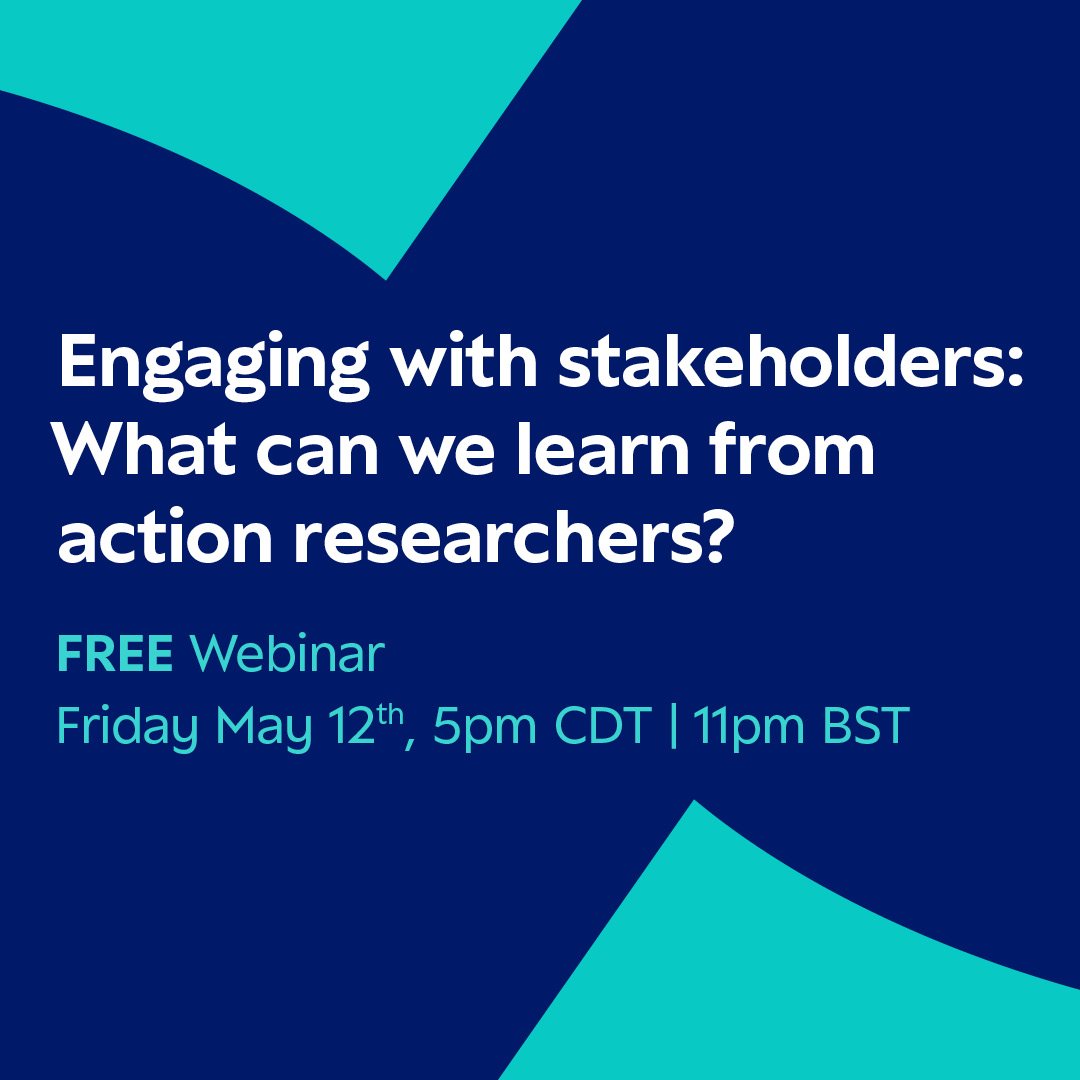Participant Observation
by Janet Salmons, PhD, Research Community Manager for SAGE Methodspace
The Methodspace focus for Q2 of 2023 is on data collection.
Participant observation is one way to collect data about, from, and with individuals, organizations, or communities.
The SAGE Encyclopedia of Qualitative Research Methods (2008) defines participant observation:
Participant observation is a method of data collection in which the researcher takes part in everyday activities related to an area of social life in order to study an aspect of that life through the observation of events in their natural contexts. The purpose of participant observation is to gain a deep understanding of a particular topic or situation through the meanings ascribed to it by the individuals who live and experience it. The term was first used by social anthropologist Bronislaw Malinowski in the 1920s, and the approach was further developed by the Chicago School under the leadership of Robert Park and Howard Becker. Participant observation is regarded as being especially appropriate for studying social phenomena about which little is known and where the behavior of interest is not readily available to public view. Through its emphasis on firsthand access to the real world and its meanings it is effective in allowing understanding of the way of life of others.
Participant observation is characterized by emergent design involving a variety of methods including direct observation of human behavior and the physical features of settings, informal interviewing, and document analysis. Researchers adopt roles that have been described by Raymond Gold as varying along a continuum of participation ranging from complete observer (no participation), through participant-as-observer (more observer than participant) and observer-as-participant (more participant than observer) to complete participant. Data are typically recorded in the form of fieldnotes that, in order for the investigator to remain as unobtrusive as possible, are written up from memory either in secluded areas such as washrooms or at the end of the day. Participant observation usually entails prolonged engagement in the field that allows for gathering more detailed and accurate information. For example, a researcher who observes a setting for several months can identify discrepancies between what people say and what they actually do.
Several methodological problems are associated with participant observation. It is not well suited to the study of large groups or populations. Gaining access to social contexts of interest—in other words, obtaining permission to collect data, establishing credibility, and earning the trust of those being observed—can be very challenging. Personal characteristics such as gender, age, and ethnicity of the investigator can interfere with access. A variety of strategies are used by researchers to overcome access problems, such as choosing a setting to which one already has some relationship through work or personal life, taking on a small task that benefits the group to be observed, and staying in the field long enough for habituation to occur. Finally, it is well known that the presence of an observer will change to at least some extent the context being studied that may threaten the trustworthiness of the data collected.
Given, L. M. (2008). The SAGE encyclopedia of qualitative research methods (Vols. 1-0). Thousand Oaks, CA: SAGE Publications, Inc. doi: 10.4135/9781412963909
Open-Access Research Using Participant Observation
This multidisciplinary collection of articles includes both on-site and online examples of data collection through participant observation.
Bruinenberg, H., Sprenger, S., Omerović, E., & Leurs, K. (2021). Practicing critical media literacy education with/for young migrants: Lessons learned from a participatory action research project. International Communication Gazette, 83(1), 26–47. https://doi.org/10.1177/1748048519883511
Abstract. During settlement, migrant youth negotiate between various transitional spaces, which include educational, mediated and transnational spaces. To what extent can critical media literacy education acknowledge and strengthen young migrants’ resilience? In this article, we evaluate the Netherlands-based participatory action research project Critical media literacy through making media. Gathered empirical data include participant observation in two classes, in-depth interviews with 3 teachers and 19 students, as well an 18-minute film reflection. The focus is on how understandings, procedures and affectivity shape young migrants’ mindful media literacy practice. In order to develop media literacy education which works for all, we need to move away from a one-size-fits-all model based on the norms of Western, educated, industrialized, rich and democratic societies. Drawing on our experiences of co-creating, practicing and evaluating a curriculum with teachers and migrant students, we demonstrate the urgency of situated, reflexive, flexible, culture and context-aware critical media literacy education.
Caufield, C. (2006). Challenges for a North American Doing Research with Traditional Indigenous Guatemalan Midwives. International Journal of Qualitative Methods, 45–55. https://doi.org/10.1177/160940690600500404
Abstract. The purpose to this article is to narratively explore the process of doing research in a transcultural setting. The research project was an ethographic design using the method of participant observation. The setting was the highlands of Guatemala, and the participants were traditional indigenous midwives with a divine mandate to practice. Using the experience of the research process, the author makes recommendations to future student researchers.
Coşkun, K., & Kara, C. (2020). What Happens During Teacher–Student Interaction in the First Year of Primary School? A New Explanation. SAGE Open. https://doi.org/10.1177/2158244020926566
Abstract. The present research aims to develop a theory on teacher–student interaction in the first year of primary school period. The present research was designed in grounded theory research which is one of the qualitative research traditions. A total of 18 primary school children started the first year of primary school. Data were collected through participant observation. Participant observation was launched after all necessary ethical permissions were taken from local education authority, the participant children, their teacher, and parents. Data were analyzed through constant comparison within three stages as open coding, axial coding, and selective coding. It was reported that the teacher and the first graders mutually developed strategies and there were several circumstances in the interaction that nested behavioral problems.
Paterson, B. L., Bottorff, J. L., & Hewat, R. (2003). Blending Observational Methods: Possibilities, Strategies, and Challenges. International Journal of Qualitative Methods, 29–38. https://doi.org/10.1177/160940690300200103
Abstract. Qualitative researchers have used the observational strategies of video recording and participant observation to investigate specific phenomena. Although there have been recent advances in the separate use of these strategies, there is evidence that there is benefit in combining these observational approaches to study particular phenomena. The purpose of the paper is to present a discussion about the application of these observational methods as blended approaches. The authors draw on their own experience as researchers and that of others to explore how these observational strategies could be combined for use in a singular study. They provide directions for researchers who select observation as a primary research strategy.
Serafinelli, E. (2020). Networked Remembrance in the Time of Insta-Memories. Social Media + Society. https://doi.org/10.1177/2056305120940799
Abstract. Since its invention, photography has always maintained a close relationship with the concept of preserving memory of the past and stopping the passage of time. In the digital age, this function is influenced by the arrival of the internet, social media platforms, and smart phones. Considering recent technological developments, this article explores the practice of photosharing on Instagram and how this popular platform is changing the way people think about and practice visual remembering. To do so, this article explores these issues qualitatively, using netnography, computer-mediated interviews, online participant observation, and visual content analysis. Findings show that digital photography does not walk away from its traditional function of maintaining memories of the past—instead new and creative practices have developed. In allowing users to share visual narratives, Instagram has led to the creation of “networked archives” of both personal and collective memories.
Soriano, C. R. R., & Cabañes, J. V. A. (2020). Entrepreneurial Solidarities: Social Media Collectives and Filipino Digital Platform Workers. Social Media + Society. https://doi.org/10.1177/2056305120926484
The article examines the role of social media groups for online freelance workers in the Philippines—digital workers obtaining “gigs” from online labor platforms such as Upwork and Onlinejobs.ph—for social facilitation and collective organizing. The article first problematizes labor marginality in the context of online freelance platform workers situated in the middle of competing narratives of precarity and opportunity. We then examine unique forms of solidarity emerging from social media groups formed by these geographically spread digital workers. Drawing from participant observation in online freelance Facebook groups, as well as interviews and focus groups with 31 online freelance workers located in the cities of Manila, Cebu, and Davao, we found that online Filipino freelancers maintain active social interaction and exchange that can be construed as “entrepreneurial solidarities.” These solidarities are characterized by competing discourses of ambiguity, precarity, opportunity, and adaptation that are articulated and visualized through ambient socialities. While we argue that these entrepreneurial solidarities do not reflect a passive and simplistic acceptance of neoliberal discourses about digital labor by digital workers, the solidarities forged in these groups also work to undermine their resistive potential such that these tend to reinforce rather than impose pressure toward critical structural changes that can improve the viability of digital labor conditions
































Dr. Stommel brings clarity to the messy world of data collection on social media.